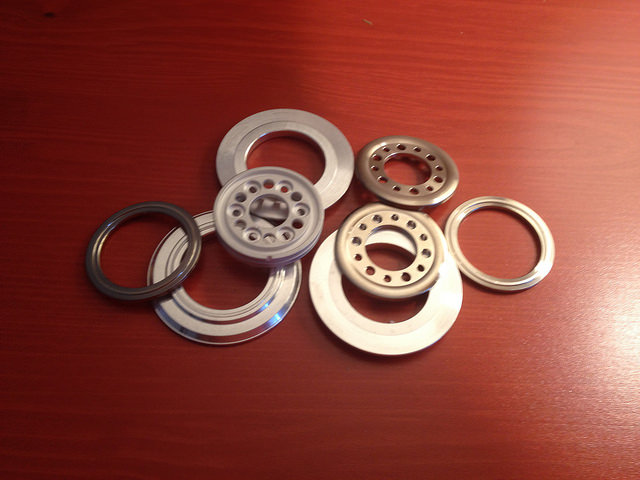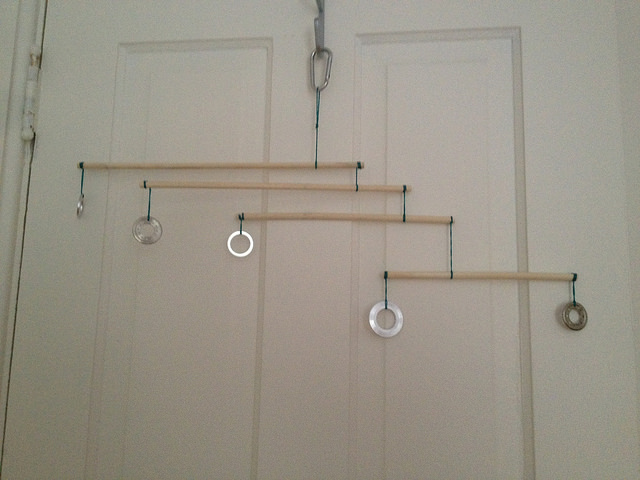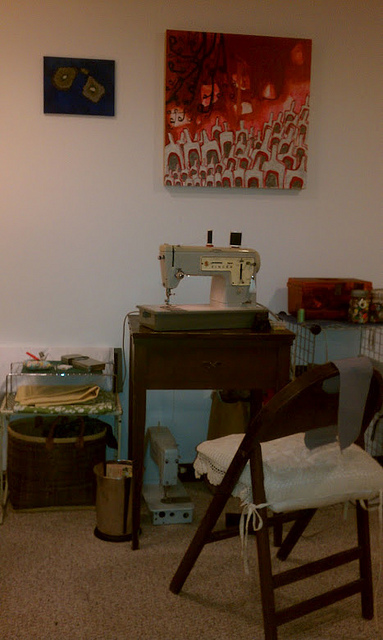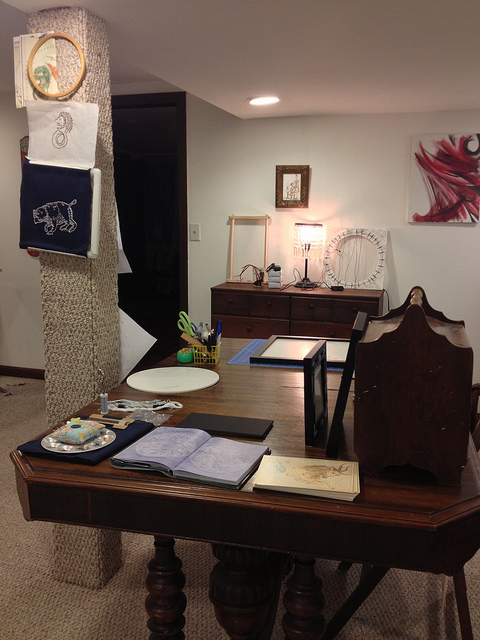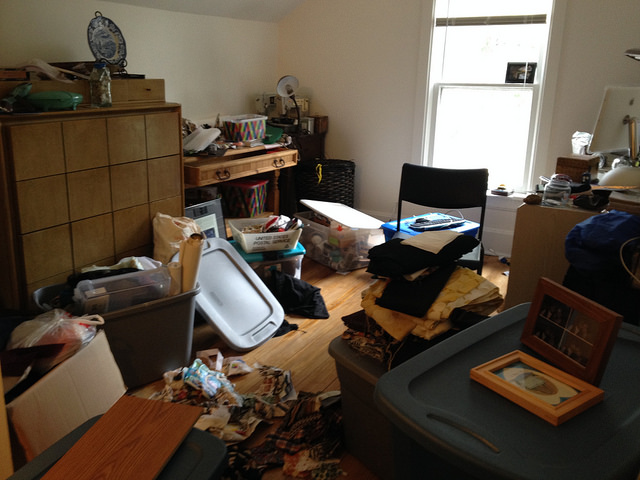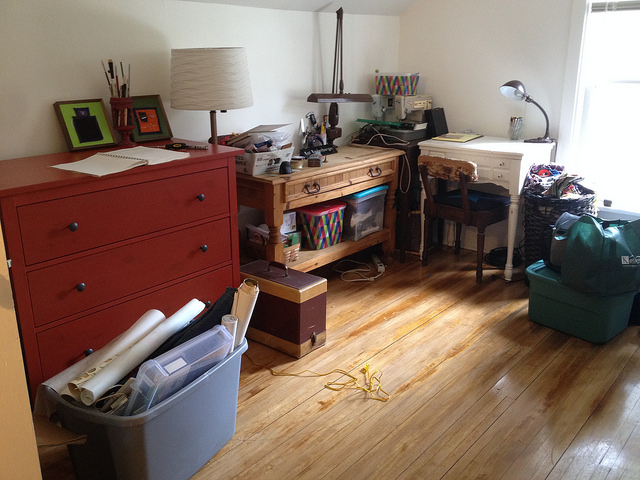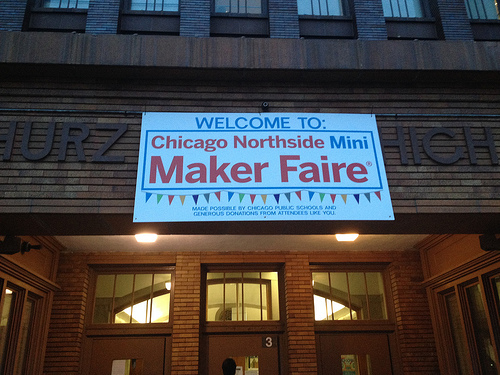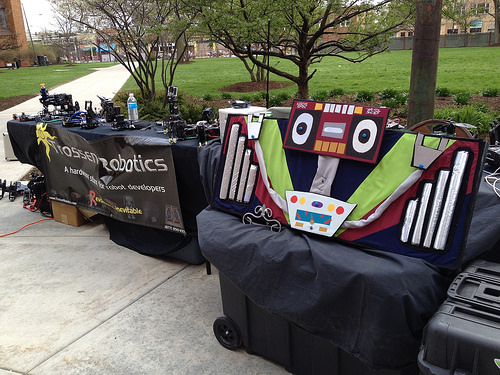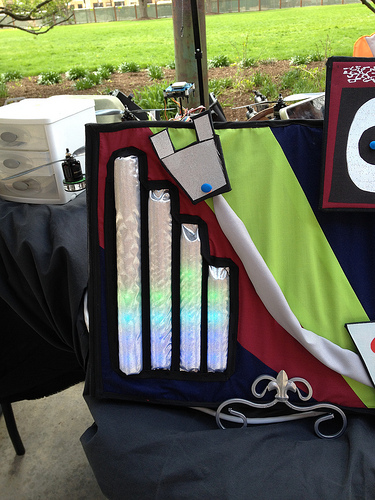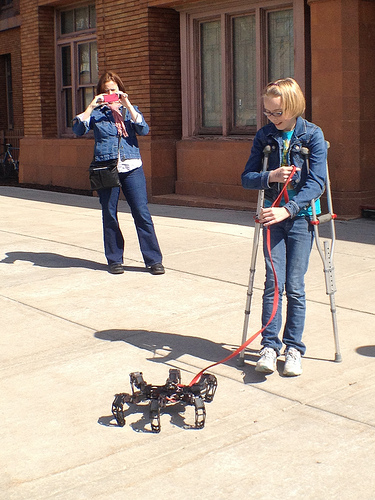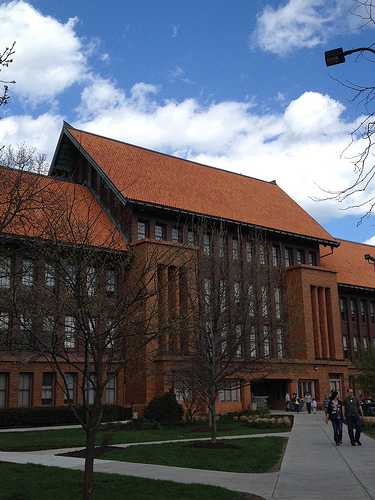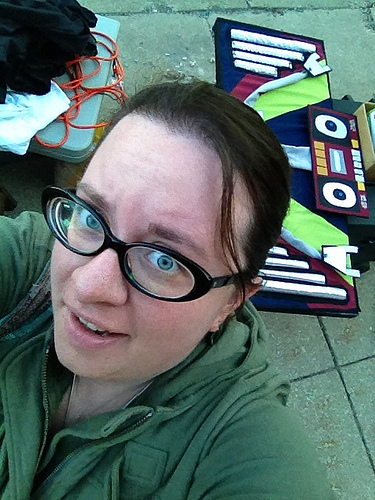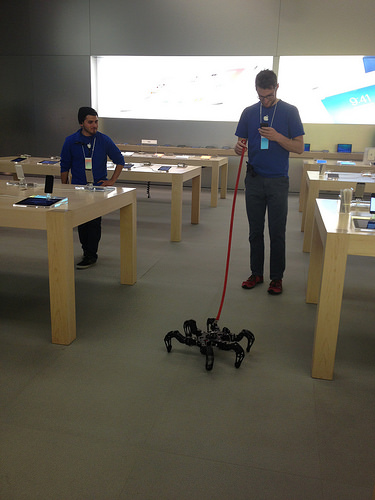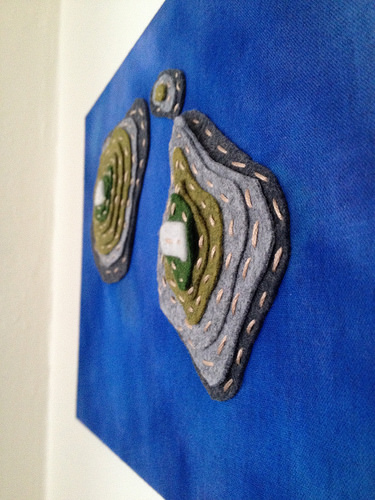So, I’ve been toying with some new things lately, and Kyle and I have been invited to propose a kinetic sculpture for permanent display in a very specific space. I love kinetic art – LOVE it, but the thing is, I’ve turned out to be a mostly 2d kind of girl. My most sculptural work to date has been the dimensional wall hangings from the Friendly Neighborhood Robot Factory show. Those consisted of robots projected off of a fabric background with some of them having several levels. This photo of Roboscout illustrates that. They’re sculptural, to a point. Some of them were even kinetic in the widest sense – Boombot with his light-up equalizer bars, the Wrasselator with his moving arms, ect. 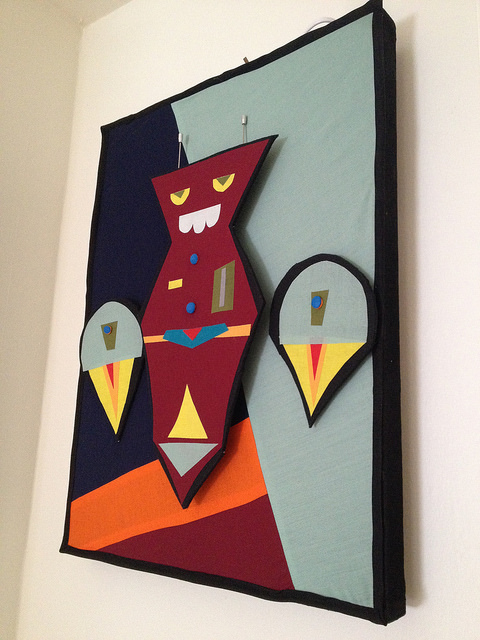 The thing is, this proposal is going to have to be something that is more dimensional, more kinetic, and frankly more collaborative between Kyle and I than any other piece we’ve worked on together. And let me tell you, I know jack about building a true kinetic work. So what did I do? I went to the library, that’s what I did. It takes a while to get what you’re searching for, but once you find it there is a gold mine out there of helpful books. My personal favorite was Creative Kinetics: Making Mechanical Marvels in Wood by Rodney Frost. It goes to the trouble to discuss all different kinds of moving works, terminology, and it discusses the way different pieces will move, which is especially helpful for someone like me. I decided to start off slow by making a mobile in order to test out the motion and construction of a piece. Due to the space we are making our proposal for, a mobile is not practical, but who says you can’t get your toes wet first before you get down to business?
The thing is, this proposal is going to have to be something that is more dimensional, more kinetic, and frankly more collaborative between Kyle and I than any other piece we’ve worked on together. And let me tell you, I know jack about building a true kinetic work. So what did I do? I went to the library, that’s what I did. It takes a while to get what you’re searching for, but once you find it there is a gold mine out there of helpful books. My personal favorite was Creative Kinetics: Making Mechanical Marvels in Wood by Rodney Frost. It goes to the trouble to discuss all different kinds of moving works, terminology, and it discusses the way different pieces will move, which is especially helpful for someone like me. I decided to start off slow by making a mobile in order to test out the motion and construction of a piece. Due to the space we are making our proposal for, a mobile is not practical, but who says you can’t get your toes wet first before you get down to business?
I had a nice rummage through my art hoard and came up with a pile of hard drive components that would look attractive in an arrangement. I started by making a lever, a branch with one weighting item at each end, and finding it’s balance point. Then I made the first vane. A vane, think weather vane, is a kinetic piece that is designed to be weighted on one side. Since I wanted to start with a simple but still elegant mobile design, I laid out my mobile to have one lever and four veins. Each vein is counterbalanced by the weight of the rest of the mobile and/or the lever underneath.
Let me tell you – the balance on these bad boys is hell of tricky. Apologies for the awful photos!
